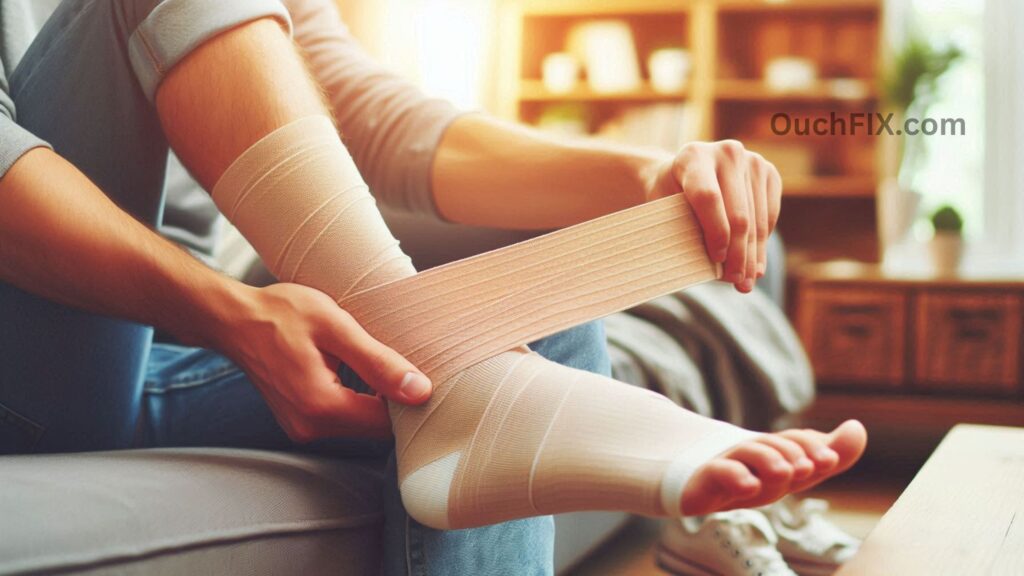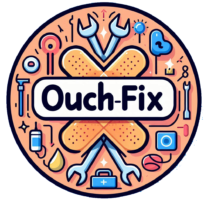Sprains are a common injury that can happen to anyone, whether you’re an athlete, a weekend warrior, or just navigating daily life. A sprain occurs when a ligament—a tough, fibrous band connecting bones—is stretched beyond its limit or torn. This can be a partial tear or a complete rupture. Because ligaments play a crucial role in stabilizing joints, a sprain can lead to pain, swelling, and limited mobility.
Fortunately, with the right care, most sprains heal effectively. In this guide, we’ll cover everything you need to know about recovery after a sprain, including treatment strategies, preventive measures, and when to seek professional help.
When to Get Medical Help
Not all sprains are minor. Some require immediate medical attention to avoid long-term complications. You should see a doctor if:

- You cannot put weight on the injured joint, or it feels unstable or numb. This may indicate a full ligament tear.
- The skin shows color changes, streaks, or signs of infection.
- Pain is directly over the bone instead of the joint.
- You’ve injured the same area multiple times before.
- The sprain is severe, with swelling, bruising, or intense pain.

Also Read: How do I Choose an Ergonomic Chair for Lower Back Support?
Common Symptoms of a Sprain
Sprains can happen in any joint but are most common in the ankles, knees, and wrists. Symptoms typically include:
- Rapid swelling around the joint
- Pain that can range from mild to severe
- Bruising or discoloration
- Limited mobility or difficulty bearing weight
The severity of swelling and pain often correlates with the extent of the injury. Mild sprains may be treated at home, while severe ones require professional evaluation.
How to Treat a Sprain
The standard treatment method for sprains is the R.I.C.E. protocol:

1. Rest
- Avoid putting weight on the injured area for 48–72 hours.
- Use crutches, a brace, or a splint if recommended by your doctor.
2. Ice
- Apply a cold pack or ice bath to reduce swelling.
- Ice for 15–20 minutes, 4–8 times a day for the first two days.
- Always place a thin towel between the ice and skin to prevent frostbite.
3. Compression
- Use an elastic bandage to help minimize swelling.
- Make sure it’s snug but not too tight to avoid cutting off circulation.
4. Elevation
- Keep the injured area raised above heart level whenever possible.
- Using pillows or cushions can help reduce swelling more efficiently.
Even with a sprained ankle, you can maintain overall fitness by exercising other body parts. For example, a stationary bike with moving arm handles lets you work your upper body and uninjured leg while letting the injured ankle rest.
Sprains may take a few days to several months to heal fully, depending on severity. Over-the-counter pain relievers like ibuprofen or acetaminophen can help manage discomfort..
Practical Recovery Tips

Recovery is not just about resting—it’s about gradually restoring strength and mobility. Here are expert-backed tips:
- Gentle movement: Once swelling decreases, start gentle exercises like ankle circles or wrist stretches.
- Physical therapy: A therapist can design exercises to regain strength and stability in the injured joint.
- Heat therapy: After the first 48–72 hours, warm compresses can help relax muscles and improve blood flow.
- Supportive gear: Consider braces, sleeves, or taping when resuming physical activity.
- Balanced nutrition: Protein, vitamin C, and collagen-rich foods can support ligament repair.
Case Example:
A runner with a moderate ankle sprain used crutches for three days, followed by gentle mobility exercises and physical therapy. Within six weeks, they returned to running without pain or instability.
Preventing Future Sprains
PrevPreventing re-injury is as important as recovery. Consider these strategies:
- Strength training: Focus on muscles surrounding vulnerable joints.
- Balance exercises: Activities like yoga or single-leg stands improve stability.
- Proper footwear: Choose shoes that provide adequate support for your activity.
- Warm-up and cool-down: Never skip stretching before sports or workouts.
Experts recommend working with a sports medicine professional to develop a personalized prevention plan, especially if you’ve had multiple sprains.

Also Read: Which Natural Supplements Help Ease Muscle Soreness?
When to Call Your Doctor
Even mEven mild sprains may require professional evaluation if:

- Symptoms don’t improve after 2–3 days
- You suspect a broken bone or severe ligament tear
- Pain, swelling, or instability persists beyond two weeks
Prompt medical attention can prevent chronic pain, joint instability, and long-term complications.
Conclusion & Next Steps
Recovering from a sprain requires patience, proper care, and a gradual return to activity. Following the R.I.C.E. method, incorporating strength and balance exercises, and knowing when to seek medical help are key steps for a smooth recovery.
Take action today: If you’re dealing with a sprain, start with gentle rest, ice, compression, and elevation, and consult a healthcare professional if pain persists. Your joints will thank you!
FAQs About Sprain Recovery
Q1. How long does it take for a sprain to heal?
Mild sprains can heal in 1–2 weeks, while severe sprains may take 2–3 months.
Q2. Can I exercise with a sprain?
Yes, but only non-injured parts of your body. Avoid putting stress on the sprained joint until cleared by a doctor.
Q3. Is heat or ice better for a sprain?
Use ice during the first 48–72 hours to reduce swelling, then heat to relax muscles and improve blood flow.
Q4. Can sprains lead to long-term issues?
If untreated or improperly healed, sprains can cause chronic instability, arthritis, or repeated injuries.
Q5. What foods help ligament recovery?
Protein, vitamin C, zinc, and collagen-rich foods like bone broth aid tissue repair.




